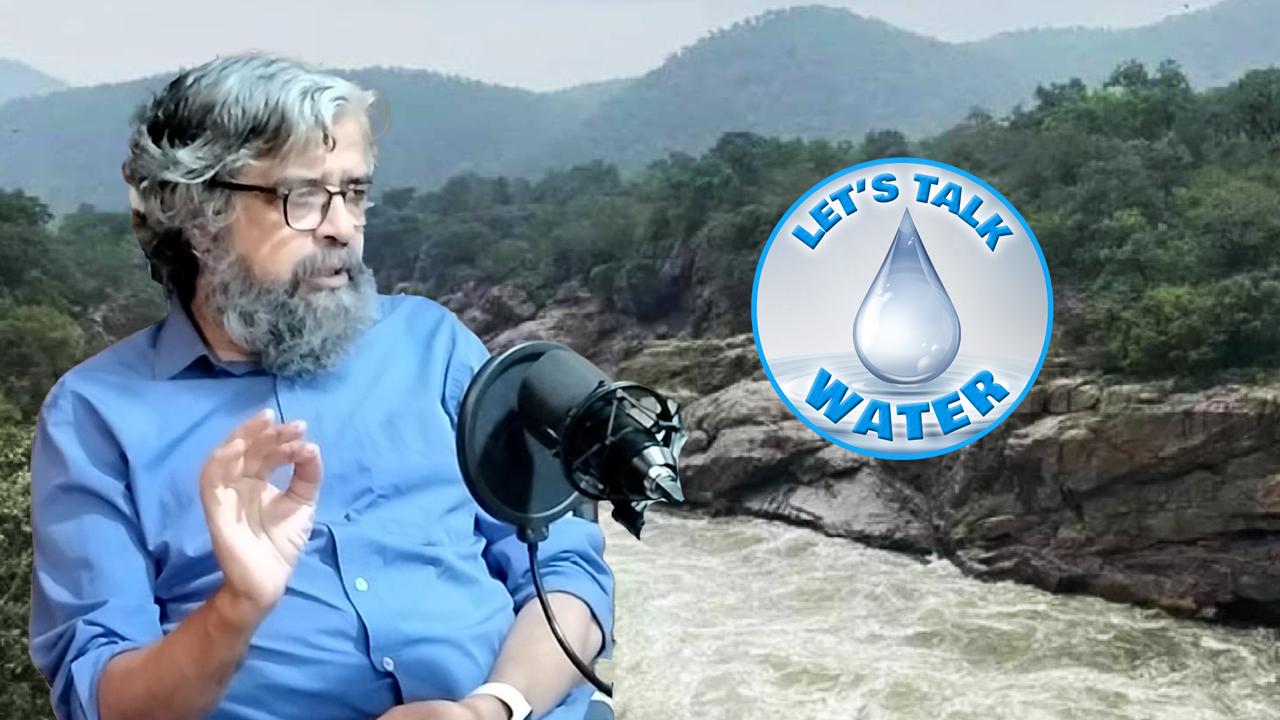He proposes a practical solution, which he calls the "Six Taps Approach," that focuses on optimising the city’s current water sources, reducing waste, and improving conservation efforts.
Published Feb 16, 2025 | 3:23 PM ⚊ Updated Feb 16, 2025 | 3:23 PM

Synopsis: Renowned water conservation expert S Vishwanath says Bengaluru has enough water resources to sustain its population. He argues that the main issue is a lack of investment in efficiency and lack of investment in all the resources that are available to us as water is what is causing the crisis.
With the heat becoming unbearable in the daytime, the issue of water woes slowly but steadily will increase. The reservoirs have already witnessed a dip in their storage levels beginning this month.
However, according to S Vishwanath, a renowned water conservation expert popularly known as the “zenrainman” on social media, Bengaluru has enough water resources to sustain its population. The real issue lies in a lack of investment, proper management, and a comprehensive water conservation strategy.
“We only take 11 percent of Karnataka’s allocated share of the Cauvery waters and support a population of nearly 40 percent of Karnataka in the Cauvery basin and support a GDP (gross domestic product) of 60 percent of the state, which is Bengaluru city, with just 11 percent of the Cauvery waters,” he explains adding that, “There is no water resource scarcity. What is scarce is investment and a goal and a vision to manage water more holistically.”
He argues that the main issue is a lack of investment in efficiency and lack of investment in all the resources that are available to us as water is what is causing the crisis.
He proposes a practical solution, which he calls the “Six Taps Approach,” that focuses on optimising the city’s current water sources, reducing waste, and improving conservation efforts.
Cauvery Water Supply (First Tap)
The first tap is from the river Cauvery which is piped water supply from a faraway source. That will bring 2,275 MLD (millions of liter per day) of water which is the volume of water that will come under the 5th phase of connections when it is completed. Vishwanath suggests that this is more than enough for the city but unfortunately, almost 30 percent is lost due to physical and financial leakages.
Rainwater Harvesting (Second Tap)
The second tap is rain. The equivalent rainfall in the entire city is 3,000 MLD, which is more than what comes in from the Cauvery. Vishwanath advocates for a citywide rainwater harvesting system by which we can harvest at least half of this, so we get at least 1,500 MLD.
Lakes and Tanks (Third Tap)
The third tap is our lakes and tanks. Vishwanath claims that they cannot be used directly but they will be a great source of recharge for the aquifers. He added that we have 186 lakes and tanks in the Bengaluru Metropolitan area. All of them need to be protected. If so necessary in the summer months, filled with treated wastewater.
Groundwater (Fourth Tap)
The fourth tap is groundwater. Vishwanath is of the view that we haven’t understood aquifers at all in our city. We simply drill borewells. He explains that aquifers have two components. One is called the shallow aquifer where you put the dug well and the other is the deep aquifer where you put a borewell. The shallow aquifer is typically 30-100ft in Bengaluru, the deep aquifer can go up to 1,800ft in Bengaluru.
If we understand these aquifers and fill them with rainwater, Lake Recharge water and treated wastewater, they have a capacity of at least 2,000 MLD kind of supply.
Treated Wastewater (Fifth Tap)
The fifth tap is treated wastewater. There are 61 wastewater treatment plants in Bengaluru. Vishwanath argues that we have enough capacity to treat wastewater. We are supplying treated wastewater to Kolar, Chikkaballapur, Anekal and other districts for agricultural use.
A portion of it can be used to fill lakes in Bengaluru and re-used or a portion of it can also be directly re-used for non-portable purposes like construction. If you do that, you will get an additional 2000 million litres per day.
Demand Management (Sixth Tap)
The sixth tap is demand management. Vishwanath emphasizes the need to reduce leaks, to price water, and make sure that the water demand is 100-135 litres per capita per day. If you are able to do this demand management, there are enough resources in this city to support 30 million.
The city’s potential to address its water crisis lies not in new sources or infrastructure alone but in a strategic overhaul of how water is utilized, conserved, and managed. With the right investments and a clear vision, Bengaluru could become a model for other cities grappling with water management challenges.
Watch the entire conversation on the Podcast.
